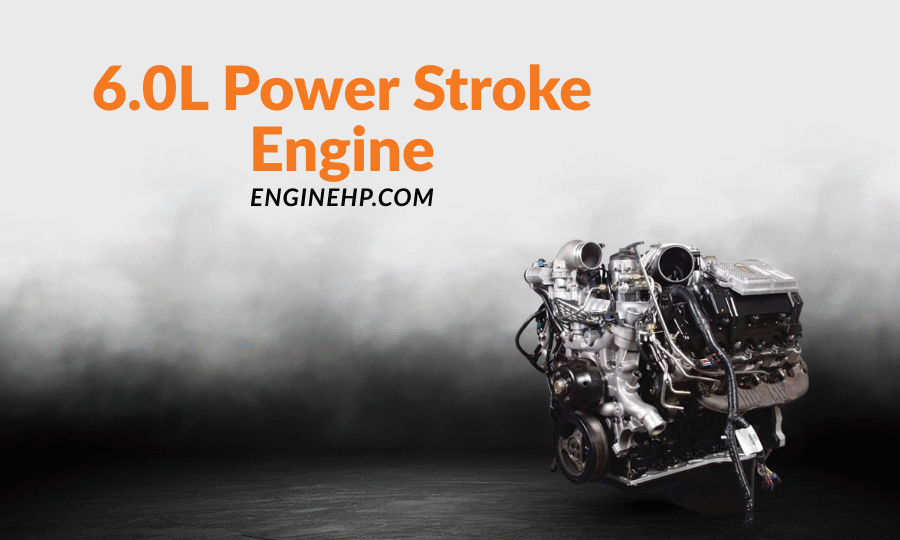
Ford Engines: 6.0L Power Stroke Diesel Engine Power, Problems & Potential
One of the most discussed diesel engines in the history of Ford is 6.0L Power Stroke engine. This engine remains a subject of controversy due to its performance capabilities and towing capacity that is cherished by a few but it is the reliability of the engine that people detest. However, in the background of the myths and horror tales, there is another truth: on the one hand, in the case of knowledge, care and enhancement, the 6.0L can still provide buyers and business with serious performance.
The Story Behind the 6.0L Power Stroke
The 6.0L diesel V8, a replacement of the 7.3L Power Stroke, was manufactured by Navistar International that was introduced in 2003. This was an effort of Ford to achieve the increased emissions standards and yet produce the best in terms of torque and horsepower.
On paper, it looked like the ideal evolution: reduced displacement, further-developed turbocharging and improved emissions. As a matter of fact, the engine earned a divided reputation where reliability problems eclipsed its good performance potential.
Interestingly the fans are used to comparing it with the M40B16 Engine- a small, rugged gasoline engine, which is admired due to its simplicity and reliability. The M40B16 is the safe bet and the 6.0L Power Stroke is more of the high-risk, high-reward gamble.
Power and Performance: What It Delivers
The 6.0L Power Stroke had been an impressive engine back in the day when it worked as it was intended to work.
| Manufacturer | International Truck and Engine Corp. |
| Production years | 2003-2008 |
| Cylinder block material | Cast iron |
| Cylinder head material | Cast iron |
| Fuel type | Diesel |
| Fuel system | Direct injection, Electro Hydraulic Generation Two (G2) injection technology |
| Direct injection, Electro Hydraulic Generation Two (G2) injection technology | |
| Configuration | V |
| Number of cylinders | 8 |
| Valves per cylinder | 4 |
| Valvetrain layout | OHV |
| Bore, mm | 95.0 mm (3.74 in) |
| Stroke, mm | 105.0 mm (4.13 in) |
| Displacement, cc | 5,954 cc (363.3 cu in) |
| Type of internal combustion engine | Four-stroke, turbocharged |
| Compression Ratio | 18.0:1 |
| Power, hp | 325 hp (242kW)/3,300 |
| Torque, lb ft | 560 lb-ft (759 Nm)/2,000 – 2003-2004 model years; |
| 570 lb-ft (773 Nm)/2,000 – 2005-2007 model years | |
| Engine weight | 966 lbs (438 kg) |
| Firing order | 1-2-7-3-4-5-6-8 |
| Engine oil capacity, liter | 14.2 l (15 qts) – with oil filter |
| Engine oil weight | Motorcraft 15W-40 Super Duty (above 30 F), 15W-30 Super Duty (below 30 F), or 5W-40 Synthetic engine oil (API-CJ-4) |
| Oil recommendations and capacity may vary depending on the car model, year, and market. Please check the service manual specific to your vehicle! | |
| Oil change interval, mile | 7,500 (12,000 km)/6 months |
| Cars with this engine | Ford F-250, Ford F-350, Ford F-450, Ford F-550 |
That torque number allowed owners of trucks to drag heavy trailers, equipment or livestock without having to downshift all the time. The smooth, more responsive feel also was attributed to the variable-geometry turbocharger, in contrast to the older fixed turbos.
Think of how you pull a weight in the gym–gasoline engines require momentum (greater rpm) to push through. Diesels such as the 6.0L Power Stroke flex without any hesitation, such as a powerlifter picking up a heavy barbell off the floor with raw power.
Reliability Concerns: Why It Got a Bad Reputation
The 6.0L Power Stroke gained a notorious reputation of having a number of failure points. Although it was strong, in the hands of owners, there were problems, which at times needed expensive repairs.
Known Weak Spots:
- Head Gaskets and Head Bolts
The bolts at the factory head were not capable of withstanding the pressure in the cylinder and caused blown gaskets. This was solved by many owners fitting ARP head studs.
- EGR Cooler Failures
The Exhaust Gas Recirculation system was likely to get clogged, overheat and ultimately pop out. This usually led to leakage of coolant and even damage of the engine.
- High-Pressure Oil System (HPOP)
High-pressure oil was the injection system, which was weak in parts such as the ICP sensor and STC fittings.
- Turbocharger Sticking
The variable-geometry turbo may be blocked by soot resulting in a slow reaction.
Ford ended the 6.0L and replaced it with the 6.4L Power Stroke by 2007. Nevertheless, when fixes are performed correctly, many 6.0L trucks can nowadays perform well beyond 250,000 miles.
Can the 6.0L Power Stroke Be Reliable?
Yes if addressed properly. The owners, who invest in appropriate upgrades, may find the 6.0L Power Stroke as a workhorse.
Common Reliability Upgrades:
- ARP stud Conversion (ARP studs) to substitute weak factory bolts.
- Aftermarket EGR Delete or Bulletproof EGR Cooler to last forever.
- Enhanced Oil Cooler to avoid clogging.
- Turbo Cleaning to keep it running.
These enhancements make the 6.0L more reliable than a headache of a diesel. It is almost as though you take an old athlete who had the raw talent and put him through modern training and nutrition- suddenly he plays at a completely new level.
Why Buyers Still Consider the 6.0L
Nevertheless, with its ill-repute, a lot of buyers continue to search after 6.0L Power Stroke trucks due to:
- Budget Friendly: New Used 6.0L trucks tend to be cheaper than 7.3L or 6.7L models.
- High Performance in the case of being fixed: On achieving the bulletproofed status, they present high-quality towing and hauling capacity.
- Aftermarket Support: The aftermarket of upgrades, parts and solutions is huge.
- DIY-Friendly: These engines are fun to wrench on and to solve their idiosyncrasy.
The 6.0L needs attention compared to others like the M40B16 Engine which hardly need major repairs, however the 6.0L rewards its owners with unmatched torque and appearance on the road.
Why Businesses Take Caution
Reliability is money in the case of business owners. Any failure implies time wastage and inefficiency. This is the reason why most firms shunned the 6.0L Power Stroke at its initial years.
Business Considerations:
- Fleet Downtime Risk: A truck that has been sidelined due to a burst head gasket is time and money wastage.
- Short vs. Long-term Costs: Reduced purchase price, and there may be increased maintenance.
- Resale Value: 6.0L trucks are less resaleable than other generations of Power Stroke.
With this said, many of the businesses that invested in upgrades could run these trucks successfully over the span of years. The 6.0L can continue to provide good ROI to smaller operations which are willing to have them.
Real-World Performance Scenarios
Towing & Hauling
The 6.0L functions well when there are heavy loads, as it is consistent in the torque at low rpm.
Highway Driving
The gentle acceleration and acceleration in particular, with a well-serviced turbo, ensures ease of long hauls.
Worksite Reliability
The 6.0L is capable of daily job site abuse, tool and equipment transport with its upgrades.
In brief: it may become a nightmare or a dream- it all depends upon the way it is kept.
Comparisons With Other Power Stroke Engines
- 7.3L Power Stroke: The legendary, 7.3 very reliable and refined less.
- 6.4L Power Stroke: Greater power, less fuel economy.
- 6.7L Power stroke: New, strong and efficient, however, more expensive.
The 6.0L is the middle one- affordable, powerful, though the signs of caution are there.
And in the talk of iconic engines, people tend to place it next to the M40B16 Engine, as they are both recalled; one as a simple engine and the other as a complicated engine.
Maintenance Tips for Owners
To maximize your 6.0L Power Stroke, use;
- Frequent Oil Changing: change every 5000 miles using good oil.
- Proper Care of cooling system: Flush coolant on a regular basis to avoid clogging.
- Check EGT/Oil Temps: ensure exhaust gas temperatures and oil temperatures are maintained.
- Fuel Additives: Apply conditioners to prevent injector wear.
- Upgrade Weak Points Early: Not to wait until there is a failure, be proactive in managing known known issues.
Who Should Buy It?
- Tr Truck lovers that enjoy alteration and servicing.
- Budget Buyers in need of inexpensive diesel towing power.
- Small Businesses that are prepared to invest in upgrades to be used in the long-run.
Who shouldn’t? Buyers who desire to have a set and forget it truck. In their case, they can be more safe with the engines such as the M40B16 Engine or the 7.3L Power Stroke.
Conclusion: The Legacy of the 6.0L Power Stroke
The 6.0L Power Stroke is an engine that has divided the story of Ford diesel. It possessed the right ingredients which included power, torque, and the latest technology but the problems of reliability marred its image. However, the 6.0L can be a good, powerful and surprisingly reliable diesel engine with modifications and good maintenance.
Consider it like that: it is not the villain that so many people make it to be- it is the misunderstood antihero. And to those who are ready to work it will still provide years of reliable service.
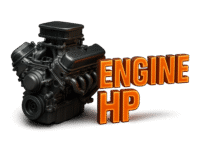

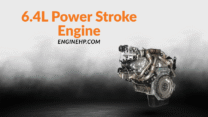
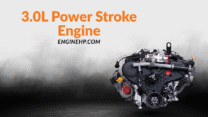
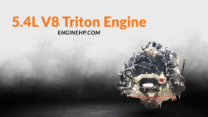
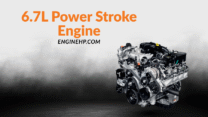
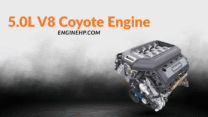

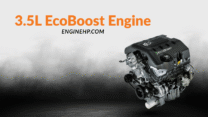
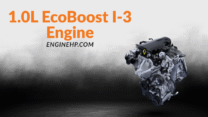
Leave a Reply